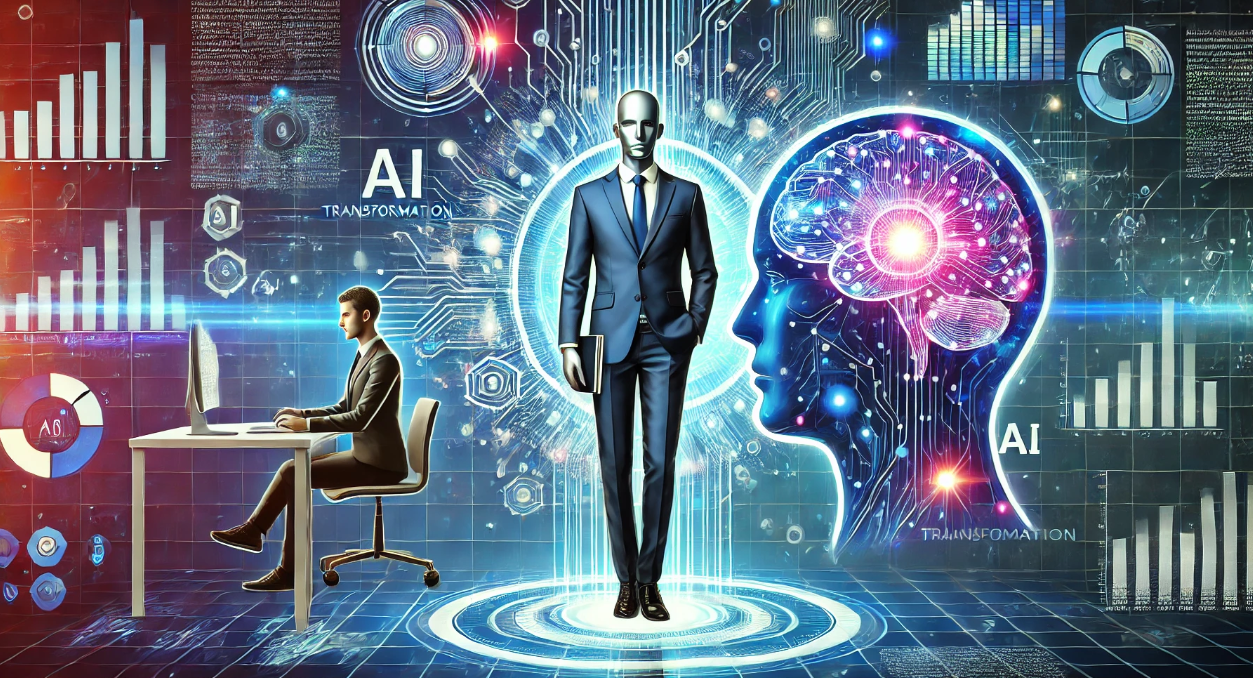Introduction: The AI Maturity Game Is On
AI is transforming how businesses operate, but it’s not just about processes and profits—it’s about people. As organizations climb the AI maturity ladder, employees face a sobering reality: jobs that can be replaced by AI will be replaced. Think of it like this: while enterprises navigate AI adoption levels, employees must also assess their career maturity level and prepare for the AI-driven future.
In this post, we’ll:
Break down the five AI maturity levels for enterprises.
Explore how employees fit into these levels and what it means for their career paths.
Discuss the emerging AI roles and departments being created within organizations.
Get real about the elephant in the room: jobs that are disappearing and how to avoid being “skilled out.”
Let’s dive in.
Corporate AI Maturity Levels
- Ad-Hoc/Exploratory
What It Looks Like:
Organizations are curious but not committed. Pilot projects emerge in silos, often without a clear strategy.
Employee Viewpoint:
No significant changes in workflows yet.
Limited exposure to AI, mostly in experimental tools.
Action for Employees:
Learn about AI basics and identify areas where AI could enhance your role.
- Opportunistic
What It Looks Like:
Departments adopt AI for quick wins, like automating repetitive tasks or optimizing workflows.
Employee Viewpoint:
Some tasks might be automated (e.g., data entry, scheduling).
Resistance to change may grow as fear of replacement sets in.
Action for Employees:
Start building skills in AI-related tools or adjacent areas where AI can’t replace human creativity and problem-solving.
- Systematic
What It Looks Like:
AI becomes part of the corporate strategy. Centers of Excellence (CoEs) guide AI adoption, and workflows integrate AI at scale.
Employee Viewpoint:
New tools appear regularly, requiring training and adaptation.
Collaboration across departments increases as AI tools connect processes.
Action for Employees:
Look for training opportunities within your organization. Focus on soft skills (e.g., communication, leadership) and human-AI collaboration roles.
- Integrated
What It Looks Like:
AI is embedded in operations, from customer service to supply chain management. Governance and compliance become priorities.
Employee Viewpoint:
AI assists with decision-making, leaving employees to focus on complex, creative tasks.
Some roles are redefined as AI handles mundane work.
Action for Employees:
Upskill in AI literacy and roles that involve interpreting AI outputs or bridging AI with business goals.
- Transformational
What It Looks Like:
AI drives new business models and competitive advantages. It’s not just about working with AI; it’s about thinking AI-first.
Employee Viewpoint:
Entire departments or roles may be replaced or reimagined.
Employees who adapt early become AI champions or leaders in AI governance.
Action for Employees:
Position yourself as a thought leader in your field by mastering AI tools and strategy. This is the time to skill up or skill over—before you’re skilled out.
The Elephant in the Room: Jobs AI Will Replace
Not every career is AI-proof. If you’re in a role that’s repetitive, rule-based, or data-driven, you’re at high risk of being automated. Harsh? Maybe. True? Absolutely.
My Story: From Printer Repair to Project Management
Back in 2002, I was a printer repair technician. It was a great job—until the cost of printers dropped and replacements became more viable than repairs. That role essentially disappeared, but I pivoted into IT project management, leveraging soft skills like problem-solving and communication. Fast forward to today, and my career is thriving because I adapted before the change forced me out.
Skill Up, Skill Over, or Be Skilled Out
Skill Up: Deepen your expertise in AI-related tools, programming, or data analysis. Become the go-to person for AI in your organization.
Skill Over: Transition to roles that require human intuition, creativity, and emotional intelligence (e.g., AI ethics, leadership, strategy).
Skilled Out: Ignore the changes, and your role may fade into obsolescence.
Emerging AI Departments and Functions
As AI matures within enterprises, new departments and roles are emerging. These are opportunities for employees to pivot into the future:
- AI Centers of Excellence (CoE):
Focus: Guiding AI strategy, governance, and integration.
Careers: AI Strategists, Data Scientists, Governance Leads.
- AI Ethics and Governance Teams:
Focus: Ensuring ethical, fair, and explainable AI use.
Careers: AI Policy Analysts, Ethics Officers, Compliance Leads.
- AI Operations (AIOps):
Focus: Managing AI-powered processes in IT and business.
Careers: AIOps Engineers, AI System Architects.
- AI-Augmented Roles in Every Department:
Marketing: Personalization strategies using AI.
HR: AI-driven talent acquisition and retention.
Customer Support: AI chatbots and escalation handling.
Finance: Fraud detection and predictive analytics.
Why Privacy and Governance Matter
AI Usage Policy (AU Policy):
Employees must understand how and when to use AI tools to protect sensitive data. For example:
No uploading confidential files to third-party AI tools.
Use internal AI systems with retrieval-augmented generation (RAG) to keep private data secure.
Data Privacy is Non-Negotiable:
RAG ensures employees get insights from private, trusted data sources without leaking information to public AI systems. This is critical for industries like finance, healthcare, and government.
Conclusion: AI Is Here—Are You Ready?
For enterprises, climbing the AI maturity ladder is about strategy, tools, and governance. For employees, it’s about recognizing that AI will change your career path—and preparing for it. Whether you’re just starting out or already in the game, the choice is clear:
Skill up.
Skill over.
Or risk being skilled out.
So, where do you—and your company—stand? More importantly, how will you climb to the next level?


